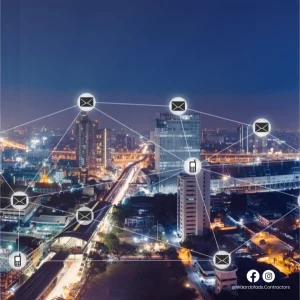
A little birdie told us that companies are experiencing a decline in their web traffic. They’re hitting their heads against the wall, trying to determine what they are doing wrong.
What they don’t know is actually quite simple, and you’re in luck because we’re about to let you in on the secret.
The truth is, you’ve got to mix both paid and organic traffic initiatives into your marketing strategy “elixir,” and finding the right balance is what will make all the difference.
If you focus too much on one or the other, your results will begin to dwindle. You see, each type of traffic has its own set of benefits, and they work best when used in unison.
The two go hand-in-hand. Paid content marketing will always amplify your organic reach, which will, in turn, amplify your paid marketing efforts and drive KPIs that you didn’t even know you could.
In this article, we’ll show you how you can effectively maximize the perfect blend of organic and paid tactics to take your content marketing strategy to the next level.
Traffic: a Definition
There are many definitions of web traffic, but generally, it refers to the number of visitors that a website receives. This can be measured in several ways, including unique visitors, pageviews, and time spent on site.
Web traffic is an important metric for any website, as it can give insights into the popularity of the site, engagement levels, and even potential revenue.
However, the two types of traffic that will be taking the main stage in this article are organic traffic and paid traffic.
Organic Traffic
Organic traffic is the term used to describe visits to a website that come as a result of unpaid search engine results. This means that the site has not been given preferential treatment by being featured in paid advertising, and instead has earned its place through organic SEO methods.
Organic traffic generally produces higher C.A.P. (conversions, average sale, profits) than paid traffic, as it is more targeted and therefore more likely to generate leads and increase sales. It can also be seen as more sustainable, as it does not rely on ongoing payments to maintain visibility.
Several methods can be used to increase organic traffic to a website, such as optimizing for specific keywords, creating high-quality content, and building links from other websites.
 Paid Traffic
Paid Traffic
Paid traffic is a type of internet marketing in which advertisers pay to have their ads displayed on websites and search engines. This can be done through various means, such as banner ads, text links, backlinks, or video ads.
Paid traffic is an effective way to reach a large audience quickly, and it can be used to target specific demographics or interests. However, it is important to note that paid traffic is generally lower-quality traffic as the majority of conversions are from people who have no opinion about your company, and ultimately see you as a commodity. Therefore, it is important to carefully consider your paid traffic strategy before implementation.
Types of Web Traffic
Organic and paid traffic can come in many forms. Under each umbrella, there are many different directions you can go. Here are some that we find to be the most impactful for businesses.
Direct Traffic
Direct traffic is one of the most important sources of organic traffic for any website. It can be defined as any traffic that arrives at your site from a direct source, such as a user typing in your URL into their browser, or clicking on a bookmark.
Direct traffic is an important metric to track because it can be an indicator of the health of your brand strategy and its ability to attract and convert prospects. If you see a sudden drop in direct traffic, it could be an indication that something is wrong with your website, such as a technical issue or poor branding. Digital marketing, therefore, has no ability to affect direct traffic in any way.
Referral Traffic
Referral traffic is the organic traffic that comes to your website from other websites. This can happen in a few different ways. Maybe someone has linked to your website from their own website or blog. Or, maybe you’ve been mentioned on a social media platform like Twitter or Facebook.
In any case, referral traffic is a valuable way to grow your website’s audience. Not only does it bring new visitors to your site, but it can also indicate that your site is being talked about and shared online — which can help boost your search engine ranking.
Email Marketing
The power of email should not be underestimated. Email marketing can be one of the most effective ways to reach your target audience and generate interest in your product or service.
This type of organic traffic is generated when someone clicks on an email they received from you, either through an email list or a forward. From there, they can read your message and click on a link that brings them to your website.
Email marketing can be a great way to connect with potential customers and create a deeper relationship with them. It can also be a great way to increase brand awareness and build trust with your audience.
Social Network Traffic
Social network traffic refers to the number of visitors that a social media site receives. This can be measured in terms of unique visitors or pageviews, and is often used as a metric to gauge the popularity of a social media page.
By sustaining a relevant, engaging and impactful voice on social media, you give yourself the best chance to draw in organic traffic that can be converted into leads, customers and valuable relationships.
Reply to people’s comments! Tell a joke! Post share worthy content at regular intervals! And make use of social media tools to help you better manage your social media presence.
 Paid Media Traffic
Paid Media Traffic
With paid media traffic, businesses essentially buy their way to the top of search engine results pages (SERPs). Paid media traffic can be generated through a variety of platforms and tactics, including pay-per-click (PPC) advertising, cost-per-thousand (CPM) advertising, and social media advertising.
The goal of paid media traffic is usually twofold: to increase brand awareness and/or increase website traffic. However, because paid media traffic is bought rather than earned organically, it can be difficult to track its effectiveness.
Additionally, because paid media relies on platforms like Google and Facebook for its success, there is always the risk that changes in algorithm or policy could drastically reduce the effectiveness of paid media campaigns.
Paid Search Traffic
Similar to paid media traffic, paid search traffic aims to send users to a brand’s website through paid ad placements.
The key difference between the two is that paid search traffic occurs when someone clicks on an ad placed within the search engine results pages (SERPs), as opposed to other paid placements that can occur elsewhere on the web.
In an SEM campaign, businesses bid on keywords that they want their ads to show up for when people search for those terms on a search engine. The higher they bid, the more likely their ad will appear on the first page of results.
Depending on the quality of their ad and landing page, as well as the relevancy of their keyword to what people are actually searching for, they may get clicks even if they’re not in the top spot.
Offline Traffic
There are a few different types of offline traffic, but the most common is traffic that comes from television commercials, radio ads, and print ads. This type of traffic is often referred to as “brick and mortar” traffic because it’s coming from a physical location.
Another type of offline traffic is online traffic that has been generated offline. For example, if you see an ad for a website on TV, and then you go to that website, the traffic that you generate is considered offline traffic, or direct search.
Offline traffic can greatly increase your website’s visibility and reach new audiences. However, not all offline traffic is good traffic. Make sure you’re targeting your advertising to the right audience, with the right message, and that your website is designed to convert visitors into customers.
Landing Page/Clickfunnels Traffic
There are two types of landing page traffic: organic and paid. Organic landing page traffic comes from search engine results, while paid landing page traffic comes from paid advertising.
Organic landing page traffic is the most valuable because it is free and targeted. Paid landing page traffic can be effective, but it is often less targeted and more expensive.
The best way to get organic landing page traffic is to optimize your website for search engines. This includes creating high-quality content, optimizing your website for keywords, and building backlinks.
Paid landing page traffic is typically generated through pay-per-click (PPC) advertising. PPC ads can be effective, but they are often more expensive than organic traffic and can be less targeted.
Finding the Right Mix
Whether you’re looking for free backlinks, or want to leverage branded advertising, there are techniques that can work for you. You don’t have to rely on just one method of getting traffic to your site, you can use a combination of both paid and organic traffic sources.
Here are some of our tips on finding the right balance that works for you:
- Test organic keywords with paid search
Before you invest a lot of time and money into optimizing your website for certain keywords, test them out with paid search. You can use ahrefs as a free backlink checker and to also see how much traffic certain keywords get and whether they’re worth pursuing organically.
- Find good paid keywords to target using organic keyword research
Use your organic keyword research to find new paid keywords to target. Look for high traffic keywords with low competition that you could realistically rank for and put them in your meta titles and meta descriptions.
- Paid advertising can be used to increase traffic and attention to seasonal or new content
You can use paid traffic to draw attention to new blog posts or pages on your website. This is especially effective around holidays or during other busy times of the year.
Use a DA (domain authority) checker to calculate the domain rating score of your website. This shows how much authority your site has based on the quantity and quality of external backlinks to a website.
- Target hard-to-reach keywords using paid search
Paid traffic can be used to target meta keywords that are difficult to rank for organically. This can help you reach potential customers who are searching for your products or services.
- Make use of organic content to strengthen paid campaigns
To make your paid campaigns more effective, you can include free links to your website’s organic content. This will help improve your website’s overall SEO and visibility.
- To maximize your SERP presence, combine paid and organic search
Paid and organic search work best when used together. A mix of the two can help you achieve a higher ranking on SERPs, as well as increased CRM (conversion rate optimization) and brand awareness.
Ultimately, the key is to experiment and find the perfect mix of paid and organic traffic that works for your business. There is no magic formula, so it’s important to test different tactics and see what conversion rate optimization you can achieve.
Start by testing different combinations of paid and organic traffic, and then adjust your strategy as needed. By finding the right mix, you can create a sustainable and successful traffic strategy that will help you reach your business goals.
However, if you’d rather skip all the pesky trial and error and work with an expert, we can help.
At Wizard of Ads™, we help businesses build powerful brands by maximizing their marketing efforts to get the most ROI. We understand what works and what doesn’t, so we can help you find your perfect mix of paid and organic traffic.
To learn more about how we can help, book a call with us today. We’d be happy to chat with you about your specific needs and goals.
- Futuristic Game for the Ad Masters - July 11, 2024
- Classical Conditioning: Pavlov’s Dog in Advertising - June 20, 2024
- Hear, See, Speak No Advertising - June 9, 2024

 Paid Traffic
Paid Traffic Paid Media Traffic
Paid Media Traffic